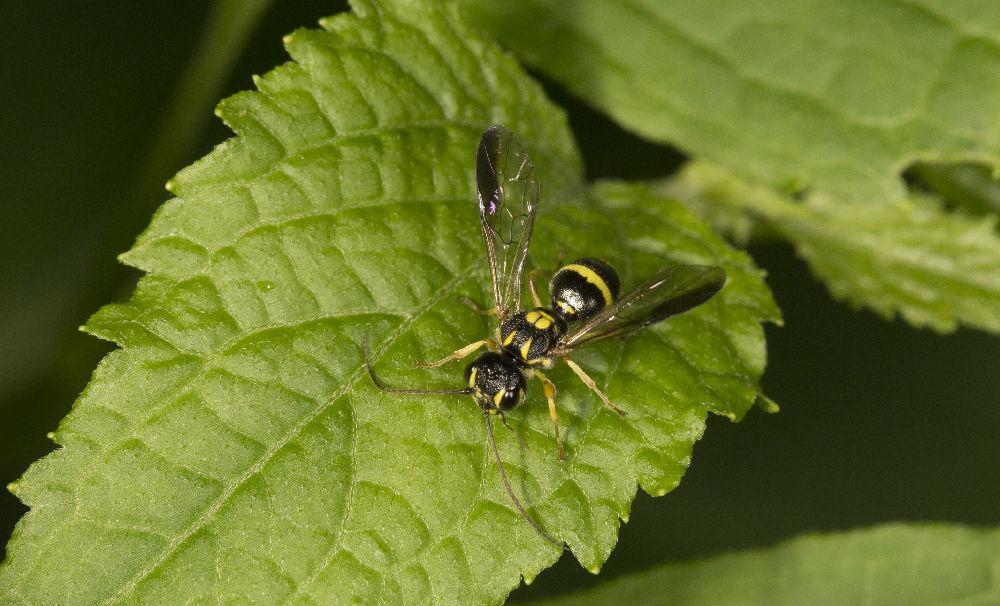Welcome to "Science Network" ↑ Follow us!
Hook-bellied wasps belong to the trigonalyiodea of the family Trigonalyidae (Trigonalyidae or Trigonalidae) of the order Hymenoptera. At present, only more than 100 species are known in the world, and 40 species are known in China (Chen et al. 2014)。 In 2013, when we revised the species in China, I examined the specimens we found as much as possible, including those collected by the Institute of Zoology of the Chinese Academy of Sciences for nearly 100 years (such as the model specimen published by Mr. Chen Shijun, the earliest specimen was collected in the 1930s). Even so, we examined fewer than 1,000 specimens. It can be seen that this type of insect is very rare.
Distinguishing features of hook-bellied wasps: antennae 13 to 32 segments, male antennae with smooth and slightly raised hypokeratoid tumors on segments 11 to 14. The compound eye is long, with the lower end near the base of the palate. The palate is developed and asymmetrical. The left and right upper jaws have different numbers of teeth; the left upper jaw has 3 to 4 teeth and the right upper jaw has 4 to 5 teeth. The jaw-to-lip-whisker ratio is 6/3, and a few are 2/2, 3/2 or 4/2. The forewings have winged nevi, at least 10 closed chambers; the anterior margin chambers are wide. Hindwings have 2 closed chambers. Posterior foot rotation section 2 sections. The tarsal claw is bifurcated, and the inner teeth are larger than the outer teeth. And the chest and abdomen throttle are covered. And the thoracic and abdominal segments often do not have a midspin. The female has a hook-like curved abdomen at the end of the abdomen, hence the name hook-bellied wasp.
Although these insects are few, their biological characteristics are very peculiar and simply unbelievable. Female adult hook-bees lay thousands of tiny eggs at the leaf margins or inserted into the leaf flesh of plants; these eggs must then be eaten and swallowed by caterpillars (including the larvae of Lepidoptera and leaf bees). After the eggs of the hook-bellied wasp enter the intestines of the caterpillar, they either hatch into larvae and burrow into the caterpillars of other parasitic bees (such as himebees and cocoon bees) or parasitic flies (such as parasitic flies) to feed, or they wait until the caterpillar is killed by the wasps and feed the wasp larvae before hatching and burrowing into the wasp larvae to begin feeding. That is, in order for a hook-bellied wasp to reproduce, its eggs must be swallowed by caterpillars, and caterpillars must be parasitized or eaten by other parasitic wasps. In this whole process, each step of the hook-bee, the chance of survival is less than nine deaths. Therefore, it can be said that every hook-bee is a legend!
Our article published in 2014 is a monograph. Before publication, the editor wanted to have an ecological photograph of the hook-bellied bee as a cover. We didn't have any such photographs on hand. Later, I found out from the Internet that the Japanese took beautiful ecological photos. I managed to find the Japanese man's email address, asked him for permission to publish, and said we would indicate the author of the picture. People were very happy, agreed to publish and sent me the original picture. Later, for some very stupid reason, it was not used on the cover. At that time, I felt very embarrassed and didn't know how to explain it to the Japanese. Forget it, talking too much is tears. For so many years, I have never seen a live hook-bee. Yesterday afternoon I finally saw a live one and took some ecological photos. If you publish a book in the future, these photos should always be used, right? Everything is still on your own.

Figure 1. Taeniogonalos gundlachii, a common species in the United States, is searching on the leaves.
Figure 2. Taeniogonalos gundlachii, a common species in the United States, is searching on the leaves.
Figure 3. Taeniogonalos gundlachii, a common species in the United States. Bending the abdomen down the leaf margin, this action was observed several times, it should be laying eggs, but I have looked at the leaves, and I have not seen the eggs, it may be that the eggs are too small or have been laid into the leaf flesh.
Figure 4. Taeniogonalos gundlachii, a common species in the United States. The leaves have clearly been eaten by caterpillars. The hook-bee bent its abdomen to the edge of the notch where the caterpillar had eaten, and it was supposed to be laying eggs, and I also looked at the leaves and did not see the eggs.
Reference:
1.Chen, H., C. van Achterberg, J. He, and Z. Xu. 2014. Arevision of the Chinese Trigonalyidae (Hymenoptera, Trigonalyoidea). Zookeys385: 1-207. https://zookeys.pensoft.net/issue/472/
Please contact the original author to obtain authorization to reprint this article, and please indicate that this article is from the Chen Huayan Science Network blog.
Link address: http://blog.sciencenet.cn/blog-361302-1066866.html